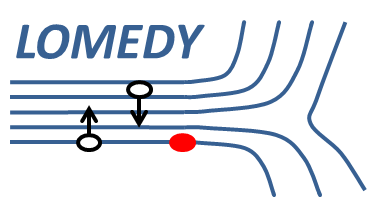

P. Kolar, M. S. Grbić, S. Hrabar, Sensors 19, 03064 (2019)
M. S. Grbić, JAP 125, 224501 (2019)
T. Cvitanić, M. Lukas, M. S. Grbić, Rev. Sci. Instrum. 90, 043903 (2019)
D. Pelc, P. Popčević, M. Požek, M. Greven, and N. Barišić, Sci. Adv. 5, eaau4538 (2019)
D. Pelc, H.-J. Grafe, G. D. Gu, and M. Požek, Phys. Rev. B 95, 054508 (2017).
R. Blinder et al. Phys. Rev. B 95, 020404(R) (2017).
D. Pelc, M. Vučković, H.-J. Grafe, S.-H. Baek, M. Požek, Nature Communications 7, 12775 (2016).
D. Pelc, M. Požek, V. Despoja and D. K. Sunko, New J. Phys. 17, 083033 (2015).
M. Došlić, D. Pelc and M. Požek, Rev. Sci. Instrum 85, 073905 (2014).
T. Cvitanić, D. Pelc, M. Požek, E. Amit, and A. Keren, Phys. Rev. B 90, 054508 (2014).
 In the journal Physical Review B, a new compound belonging to the class S=1 of the Haldane chain was presented. The article is the result of a long-term cooperation of the NMR group with partners from Japan, Slovenia and France. The research was led by I. Jakovac, T. Cvitanić and M.S Grbić, with the support of colleagues from the Department of Chemistry: N. Baus Topić and D. Cinčić.
In the journal Physical Review B, a new compound belonging to the class S=1 of the Haldane chain was presented. The article is the result of a long-term cooperation of the NMR group with partners from Japan, Slovenia and France. The research was led by I. Jakovac, T. Cvitanić and M.S Grbić, with the support of colleagues from the Department of Chemistry: N. Baus Topić and D. Cinčić.
The paper presents the properties of a completely organic S=1 antiferromagnetic (AF) chain m-NO2PhBNO (abbreviation BoNO). In this biradical system, the two unpaired electrons from the aminoxyl groups are strongly ferromagnetically bound (|JFM|/kB ≈ 500 K), which leads to the creation of an effective S = 1 state for each BoNO molecule. The chains of BoNO biradicals extend along the crystallographic a axis. The temperature dependences of the g factor and electron paramagnetic resonance (EPR) linewidth are consistent with a low-dimensional system with AF interactions. EPR data further suggest that BoNO is a Haldane system with a nearly isotropic g factor (2.0023 ± 2‰). Magnetization measurements in magnetic fields up to 40 T and susceptibility in low field, together with 1H nuclear magnetic resonance (NMR) spectra, reveal dominant intrachain AF coupling of J1D/kB = (11.3 ± 0.1) K, and achievable critical magnetic fields of μ0Hc1 ≈ 2 T and μ0Hc2 ≈ 33 T. Our measurements therefore suggest that BoNO is a rare example of a Haldane system with extremely small magnetic anisotropy. The present results are crucial for future in-depth NMR studies of the low-temperature Tomonaga-Luttinger liquid phase and magnetic field-induced phases, which can be carried out in the entire phase space.
